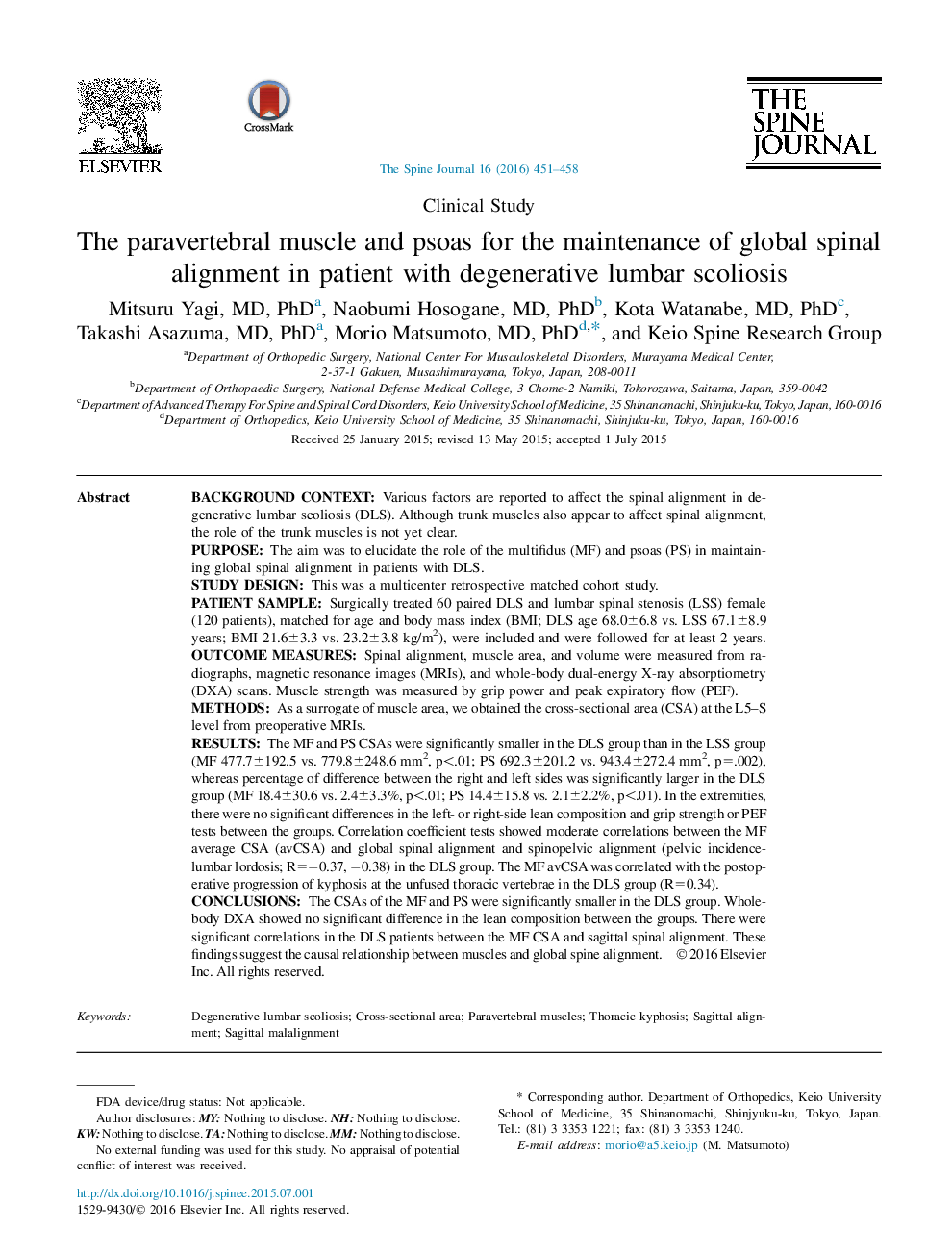| کد مقاله | کد نشریه | سال انتشار | مقاله انگلیسی | نسخه تمام متن |
|---|---|---|---|---|
| 6211702 | 1268557 | 2016 | 8 صفحه PDF | دانلود رایگان |

Background contextVarious factors are reported to affect the spinal alignment in degenerative lumbar scoliosis (DLS). Although trunk muscles also appear to affect spinal alignment, the role of the trunk muscles is not yet clear.PurposeThe aim was to elucidate the role of the multifidus (MF) and psoas (PS) in maintaining global spinal alignment in patients with DLS.Study designThis was a multicenter retrospective matched cohort study.Patient sampleSurgically treated 60 paired DLS and lumbar spinal stenosis (LSS) female (120 patients), matched for age and body mass index (BMI; DLS age 68.0±6.8 vs. LSS 67.1±8.9 years; BMI 21.6±3.3 vs. 23.2±3.8 kg/m2), were included and were followed for at least 2 years.Outcome measuresSpinal alignment, muscle area, and volume were measured from radiographs, magnetic resonance images (MRIs), and whole-body dual-energy X-ray absorptiometry (DXA) scans. Muscle strength was measured by grip power and peak expiratory flow (PEF).MethodsAs a surrogate of muscle area, we obtained the cross-sectional area (CSA) at the L5-S level from preoperative MRIs.ResultsThe MF and PS CSAs were significantly smaller in the DLS group than in the LSS group (MF 477.7±192.5 vs. 779.8±248.6 mm2, p<.01; PS 692.3±201.2 vs. 943.4±272.4 mm2, p=.002), whereas percentage of difference between the right and left sides was significantly larger in the DLS group (MF 18.4±30.6 vs. 2.4±3.3%, p<.01; PS 14.4±15.8 vs. 2.1±2.2%, p<.01). In the extremities, there were no significant differences in the left- or right-side lean composition and grip strength or PEF tests between the groups. Correlation coefficient tests showed moderate correlations between the MF average CSA (avCSA) and global spinal alignment and spinopelvic alignment (pelvic incidence-lumbar lordosis; R=â0.37, â0.38) in the DLS group. The MF avCSA was correlated with the postoperative progression of kyphosis at the unfused thoracic vertebrae in the DLS group (R=0.34).ConclusionsThe CSAs of the MF and PS were significantly smaller in the DLS group. Whole-body DXA showed no significant difference in the lean composition between the groups. There were significant correlations in the DLS patients between the MF CSA and sagittal spinal alignment. These findings suggest the causal relationship between muscles and global spine alignment.
Journal: The Spine Journal - Volume 16, Issue 4, April 2016, Pages 451-458